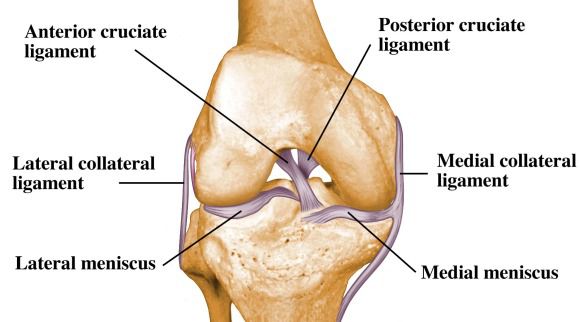Posterior Cruciate Ligament (PCL) Injury
What is the Posterior Cruciate Ligament?
The Posterior Cruciate Ligament (PCL) is a ligament inside the knee joint. The PCL attaches to the shin bone (tibia) and to the thigh bone (femur). Along with the anterior cruciate ligament (ACL), these ligaments provide stability to the knee.
The main role of the PCL is to prevent the shin bone from sliding backwards on the thigh bone.
Mechanism of Injury
A direct blow to the upper area of the shin bone is the main cause of a PCL injury. In the general public this is seen during motor vehicle accidents where the top of the shin hits the dashboard. In the sporting population, PCL injuries occur when the athlete falls onto their bent knee causing the shin to hit the ground first. This type of mechanism is common in:
- Football
- Soccer
- Basketball
- Skiing
Signs and symptoms
- Pain and/or swelling immediately following the injury
- Difficulty walking
- The knee may feel unsteady. It may feel like it is going to give way
Grading of Injury

PCL injuries are often graded I, II, III. Grade I and II are partial tears of the PCL whilst a grade III signifies a complete rupture of the ligament
Grade I – The PCL is overstretched resulting in a small partial tear. The knee remains stable.
Grade II – More of the PCL is torn when compared to a grade I. The ligament is now loose. The knee may start to feel unstable at this grade.
Grade III – This PCL is completely torn. The knee joint is now unstable.
Assessment
Isolated PCL injuries are uncommon. It is more likely for additional injuries to occur to other structure of the knee. These include damage to the meniscus and/or medial and lateral collateral ligaments and even the ACL.
A thorough physiotherapy assessment is required to discover the extent of the injury and if any other structures are damaged. After gaining you subjective history, your physiotherapist will put you through a series of special tests to determine the extent of the injury.
After a knee injury, you may be referred for an MRI scan. This is often necessary to confirm a PCL injury and other associated injuries. Your physiotherapist, doctor or surgeon can refer you for this scan. You may require a X-Ray if an avulsion fracture (small component of bone pulled away by the ligament) is suspected.
Treatment
The PCL can be treated either conseratively or surgically. This is dependent on the grading of the PCL injury and and other associated injuries.
In the immediate stages following a knee injury, it is advisable to follow the POLICE principle for the initial 48-72 hours. This involves Protection, Optimal Loading, Ice, Elevation and Referral for medical management. It is also advisable to follow the NO HARM program to reduce further bleeding and swelling into the joint: NO Harm, Alcohol, Running or Massage
Conservative Management – May include other injuries as well
Patient who have grade I or II PCL tears usually receive conservative treatment. This treatment can consist of a period of immobilisation of the knee with bracing. During the initial period of rehabilitation it is important to focus on strengthen both the quadriceps and hamstring muscles and to regain full movement of the knee.
Sport and skill specific training is crucial in the latter stages of rehabilitation in order to provide ongoing stability to the knee and to provide a successful return to sport or activity.
Surgical Management
Injuries which involve other structure of the knee and Grade III PCL injuries are likely to require surgical intervention. If a period of conservative management has failed to provide stability to the knee, surgery may also be required.
Similar to that of the ACL, the PCL can be reconstructed arthroscopically. This involves the use of tissue grafts to rebuild you PCL. The graft can be taken from another part of your body, often the hamstring or quadriceps tendon, or from another human donor (cadaver). It can take several months for the new ligament to fully integrate with the bones of your knee.
Rehabilitation
Regardless of whether you have opted to treat your PCL injury surgically or conservatively, it is important you participate in a rehabilitation program under the guidance of your physiotherapist.
The aims of physiotherapy are to:
- Restore range of motion of your knee
- Improve strength of the surrounding muscles
- Address poor biomechanics
- Improve jumping and landing strategies
- Skill Retraining/ Sport specific activities
- Return to Sport
- Prevent Re-injury
At Total Physiocare we treat hundreds of knee injuries and work closely with multiple orthopaedic surgeons in order to accurately diagnose, manage and rehabilitate clients following an acute knee injury.
Book an appointment today for your assessment!
Blog By Ryan Harris (Physiotherapist)


